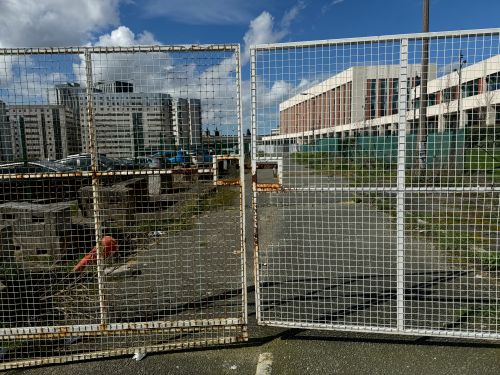 In the United States, many federal government workers have been left without paychecks over the last month as their politicians struggle to agree on a budget. While shutdowns are a fairly regular feature of US politics, this shutdown is now the longest in their history.
In the United States, many federal government workers have been left without paychecks over the last month as their politicians struggle to agree on a budget. While shutdowns are a fairly regular feature of US politics, this shutdown is now the longest in their history.
Services which are deemed essential continue as normal but a lot of these workers will not be paid until the budget is passed and the federal government has funds again to operate. The impact can be significant. Families need to be fed, rents and mortgages need to be paid. Other disruptions are being felt; many flights have been cancelled or delayed due to a shortage of air traffic controllers who are calling in sick as they continue to be expected to work without pay. The shutdown has many features in common with “lock outs” in New Zealand’s collective bargaining system.
The waterfront dispute of 1951 was the biggest industrial confrontation in New Zealand’s history. It lasted 151 days and at its peak, 22,000 wharfies and other unionists did not work. The parties involved could not even agree on what to call the dispute – the employers and government described it as a strike, to the wharfies it was a lockout.
After World War II with its years of restrictions and shortages the New Zealand economy was booming. Workers demanded higher wage increases due to the cost of living increasing substantially. Under the old industrial arbitration system in 1951 the Arbitration Court awarded a 15% wage increase to all workers covered by an award. The wharfies were not covered. Their employment was controlled by the Waterfront Industry Commission (largely controlled by British shipping companies). They were offered a 9% wage increase, the companies claiming that earlier wage increases should be taken into account. The Waterside Workers’ Union protested by refusing to work overtime. The shipping companies in turn refused to hire the wharfies unless they agreed to work extra hours. When no agreement could be reached, union members were locked out.
While not common in New Zealand, lockouts are usually seen as industrial action taken by employers in retaliation for strike action over the negotiation of a collective employment agreement. Essentially, employers deny employees work, and as result do not pay the locked out workers.
Recently, New Zealand’s toilet paper supply came under threat in 2022. After a series of strikes, around 150 staff were locked out for weeks by the owner of the Essity mill in Kawerau. The company drastically ramped up the pressure on the union and the union members by filing an application seeking substantial damages of over $500,000 from the union and individual union members over the employer’s claim that the strike was unlawful because it commenced an hour before the date and time specified in the strike notice.
If a strike or lockout is lawful, the Employment Relations Act provides legal protection from civil action (often monetary damages) for those engaged in the strike or lockout. For the strike or lockout to be lawful it must comply with some notice requirements, such as when the strike or lockout will take place, when it will begin and when the strike will end. An error may not effect the validity of the notice if it is minor and technical only. As the then Chief Judge wisely said in SFWU v OCS Ltd “strict compliance is expected with those statutory requirements of content and timeliness. But that said, the Court should take a pragmatic, rather than a pedantic, approach…. Strike and lockout notices are powerful practical bargaining weapons where recipients of such notices have a strong incentive to have these events delayed or even nullified by reliance on legal technicalities that may have little or nothing to do with the merits of the bargaining”.
The effects of a government shut down or industrial action on the wider public can be unsettling or even distressing. Due to the length of the shutdown in the US, money has run out for the food assistance programme, commonly known as "food stamps". There are 41 million people enrolled in the programme and they were warned late last month that they would lose their food assistance. In a temporary measure, President Trump’s administration has recently said it would partially fund the programme for this month using emergency funds.
Nobody likes to see their doctors, nurses, teachers and emergency workers out on strike. However, there appears to be widespread support for their positions. Others will think of the disruption or risk to their personal position and take a different view. Whatever view one takes, taking industrial action is likely to have a significant impact on both the workers and the employers and usually is not taken lightly. But the impact is usually much wider than the parties involved. The 1951 waterfront dispute continues to hold a central place in the history and mythology of the New Zealand labour movement. Read more...

